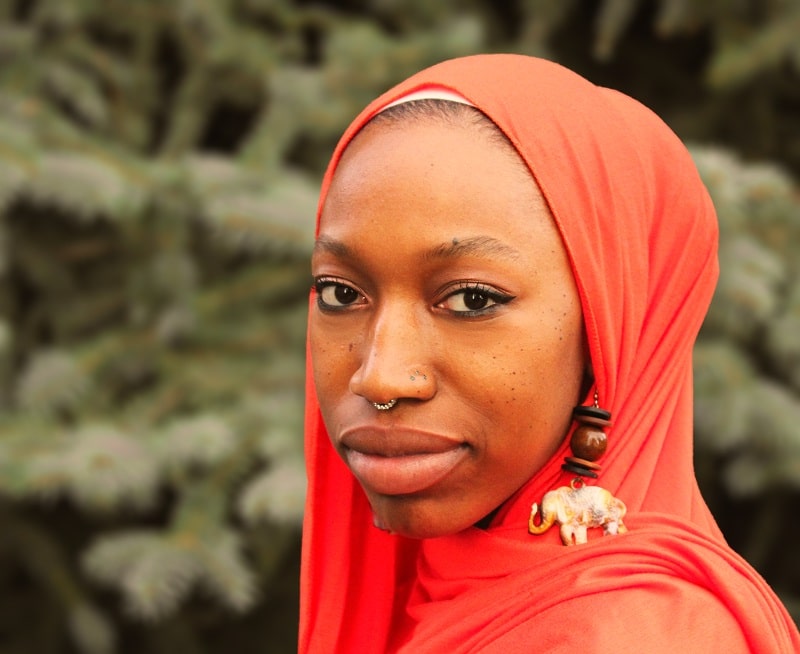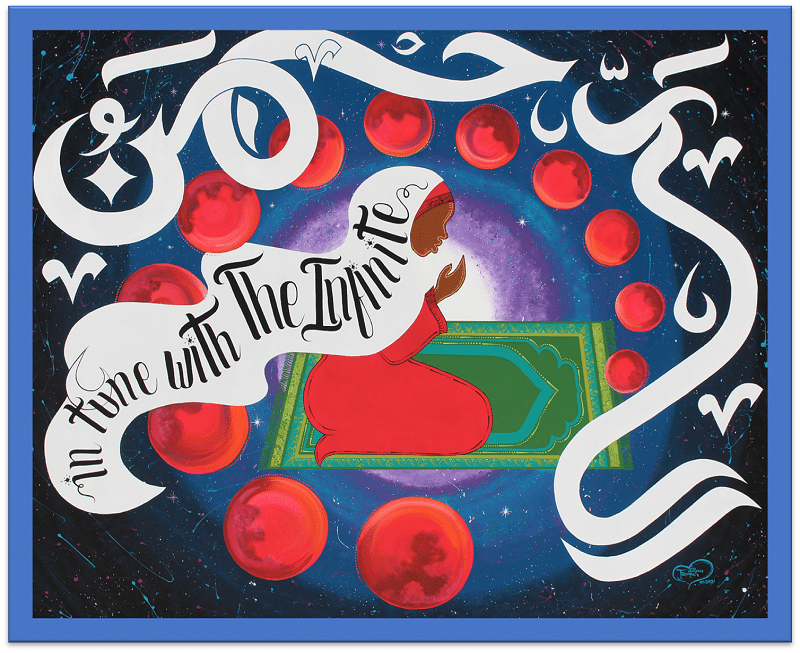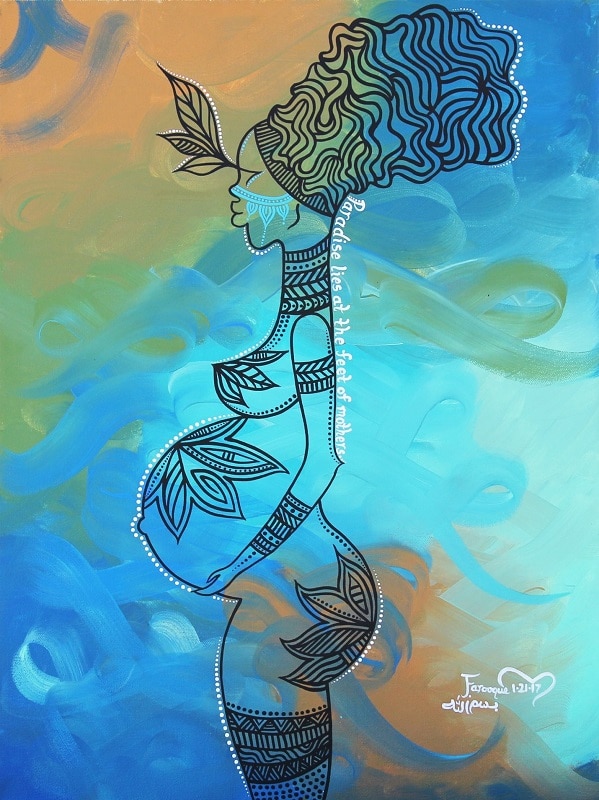
Jannah Farooque created “Blood Moon” because she found a deeper understanding of Allah (God) through menstruating.
In Farooque’s (pronounced Far-ruk) painting, she explains, “a Muslim woman is making du’a (doo-ah.)”
Du’a means prayer. While on her period, she sits on a prayer mat and prays to “The Infinite,” known as “Allah.” Her red garment represents menstruation, and the 12 blood moons are a woman’s menstrual cycle throughout the year.
Within the faith, Muslim women are excused from offering the five daily prayers, that occur at specific times throughout the day. During menstruation, they can experience physical discomfort. In their spiritual tradition, Muslim women are encouraged to make du’a.
Farooque shares, “a woman can make du’a about her kids, about [her] needs, such as more patience, or anything she wants. They can also choose to simply rest. Such as go to bed early. Or decide to sleep in.”
When Muslims observe the holy month of Ramadan, they do not eat or drink from sunrise to sunset. But menstruating women “can eat, drink, and continue to rest,” says Farooque. Outside Farooque’s faith, secular society does not emphasize resting when a woman is on her period–a matter that irks Farooque.

Put on a Happy Face
Rest is not seen in tv ads for feminine products. To Farooque, “these ads reflect a fake happiness. The ads show women on the go, and the things they are doing. They don’t show what women want to do during their period. I may need to curl up on my couch with a bowl of strawberry ice, and watch Lifetime television.”
By providing a counterfeit smile to menstruating, advertisers erase the discomfort of a period. This visual image is not good for “girls who grow-up without a mother or a mother figure. These ads need a more balanced approach. Show me a women doubled-over because of cramps, or a wife yelling at her husband.”
Like television advertisers, the workforce teaches women to be covergirls. In the workplace, women cover-up their aches of menstruation. As though their “female problem,” should not become a labor problem. But what leads women to buck-up, and shut-up about menstrual pain? In 2021, writer Pauline De Leon, wrote, “Most Women Who Suffer From Painful Periods Hesistate To Take Time Off Work.”
In the article, Womanizer surveyed 470 women from 26 countries. The survey revealed various responses, such as “invalid reason to call in sick from work,” to “my employer never discussed menstrual leave.”
Farooque strongly believes, “women shouldn’t have to pop a Midol, show-up for work on time, and pretend, ‘Everything’s OK, Bob.’
Despite the societial perspective, Farooque, gave her daughters a different perspective.

When It Flows
Within the Muslim faith, the mark of womanhood starts at menstruation. At that point, girls are obligated to pray the five daily prayers. As a mother of five, she educated her three daughters about their bodies. She discussed their armpit hairs and their pubic hairs. Instead of saying flower, she used the word “vagina.”
Before her oldest daughter began menstruating, Farooque did not want her oldest to view her period as ‘‘gross’’ or “associated with negativity.” By turning to the Holy Quran, the religious text of Islam, Farooque found revelation on the spiritual aspect of menstruating.
“In the 99 names of God, the first two names are Ar-Rahman, Ar-Raheem. Ar-Rahm means ‘’The Entirely Merciful,’’ and Ar-Raheem means, “The Bestower of Mercy.” The root letters ra-haa-meen also mean “womb.” The womb provides protection and nourishment, where all creation is brought into being. As we pray the five daily prayers, we remember the womb, where all life is brought forth. God Almighty is The One who commands blood to leave the uterus at a set time each month. Our wombs are the sacred passage between sky and earth, life and death, and between The Infinite and the finite. Our wombs are literally connected to the throne of God. What a Mercy that God recognizes my humanity by giving me a time each month to rest, retreat, and remember on a more intimate level. Which is the meaning of Blood Moon. In the painting, the Arabic in white surrounding her says, ‘Ar-Raham.’ May we always see God and the beauty in our bodies and blood,” concludes Farooque.
Farooque’s received positive feedback on “Blood Moon.” She believes the painting crosses all cultural and all religious lines, because the subject relates to all women. She hopes that it will “remind women of the divinity of their periods.”









